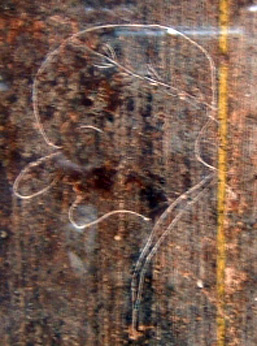Caricature




Caricature is a rendered image showing the features of its subject in a simplified or exaggerated way through sketching, pencil strokes, or other artistic drawings. Caricatures can be insulting or complimentary and can serve a political purpose or be drawn solely for entertainment.
History[edit]
The term "caricature" originates from the Italian word "caricare," meaning "to load" or "to exaggerate." The art form has a long history, dating back to the works of Leonardo da Vinci, who sought to understand the concept of ideal beauty by studying the "grotesque." Caricature became particularly popular in the 18th century with artists like William Hogarth and James Gillray.
Techniques[edit]
Caricature artists often focus on the most prominent features of their subjects, such as a large nose, big ears, or a distinctive hairstyle. By exaggerating these features, the artist creates a humorous or grotesque effect. Techniques include:
- Exaggeration: Emphasizing certain features to create a humorous effect.
- Simplification: Reducing the complexity of the subject's features.
- Distortion: Altering the proportions of the subject's features.
Types of Caricature[edit]
Caricatures can be broadly categorized into two types:
- Portrait Caricature: Focuses on the physical appearance of the subject.
- Political Caricature: Often used in editorial cartoons to comment on political events and figures.
Famous Caricaturists[edit]
Some of the most renowned caricaturists include:
- Honoré Daumier: Known for his political caricatures in 19th-century France.
- Thomas Nast: An American caricaturist famous for his political cartoons.
- Al Hirschfeld: Known for his caricatures of celebrities and Broadway stars.
Modern Caricature[edit]
In contemporary times, caricature remains a popular form of art. It is often seen in newspapers, magazines, and online platforms. Digital tools have also expanded the possibilities for caricature artists, allowing for more intricate and detailed works.
Applications[edit]
Caricatures are used in various contexts, including:
- Entertainment: At events like fairs and parties.
- Political Commentary: In editorial cartoons and satirical magazines.
- Advertising: To create memorable and humorous advertisements.
See Also[edit]
References[edit]
<references group="" responsive="1"></references>
External Links[edit]
Ad. Transform your life with W8MD's Budget GLP-1 injections from $75


W8MD offers a medical weight loss program to lose weight in Philadelphia. Our physician-supervised medical weight loss provides:
- Weight loss injections in NYC (generic and brand names):
- Zepbound / Mounjaro, Wegovy / Ozempic, Saxenda
- Most insurances accepted or discounted self-pay rates. We will obtain insurance prior authorizations if needed.
- Generic GLP1 weight loss injections from $75 for the starting dose.
- Also offer prescription weight loss medications including Phentermine, Qsymia, Diethylpropion, Contrave etc.
NYC weight loss doctor appointmentsNYC weight loss doctor appointments
Start your NYC weight loss journey today at our NYC medical weight loss and Philadelphia medical weight loss clinics.
- Call 718-946-5500 to lose weight in NYC or for medical weight loss in Philadelphia 215-676-2334.
- Tags:NYC medical weight loss, Philadelphia lose weight Zepbound NYC, Budget GLP1 weight loss injections, Wegovy Philadelphia, Wegovy NYC, Philadelphia medical weight loss, Brookly weight loss and Wegovy NYC
|
WikiMD's Wellness Encyclopedia |
| Let Food Be Thy Medicine Medicine Thy Food - Hippocrates |
Medical Disclaimer: WikiMD is not a substitute for professional medical advice. The information on WikiMD is provided as an information resource only, may be incorrect, outdated or misleading, and is not to be used or relied on for any diagnostic or treatment purposes. Please consult your health care provider before making any healthcare decisions or for guidance about a specific medical condition. WikiMD expressly disclaims responsibility, and shall have no liability, for any damages, loss, injury, or liability whatsoever suffered as a result of your reliance on the information contained in this site. By visiting this site you agree to the foregoing terms and conditions, which may from time to time be changed or supplemented by WikiMD. If you do not agree to the foregoing terms and conditions, you should not enter or use this site. See full disclaimer.
Credits:Most images are courtesy of Wikimedia commons, and templates, categories Wikipedia, licensed under CC BY SA or similar.
Translate this page: - East Asian
中文,
日本,
한국어,
South Asian
हिन्दी,
தமிழ்,
తెలుగు,
Urdu,
ಕನ್ನಡ,
Southeast Asian
Indonesian,
Vietnamese,
Thai,
မြန်မာဘာသာ,
বাংলা
European
español,
Deutsch,
français,
Greek,
português do Brasil,
polski,
română,
русский,
Nederlands,
norsk,
svenska,
suomi,
Italian
Middle Eastern & African
عربى,
Turkish,
Persian,
Hebrew,
Afrikaans,
isiZulu,
Kiswahili,
Other
Bulgarian,
Hungarian,
Czech,
Swedish,
മലയാളം,
मराठी,
ਪੰਜਾਬੀ,
ગુજરાતી,
Portuguese,
Ukrainian
